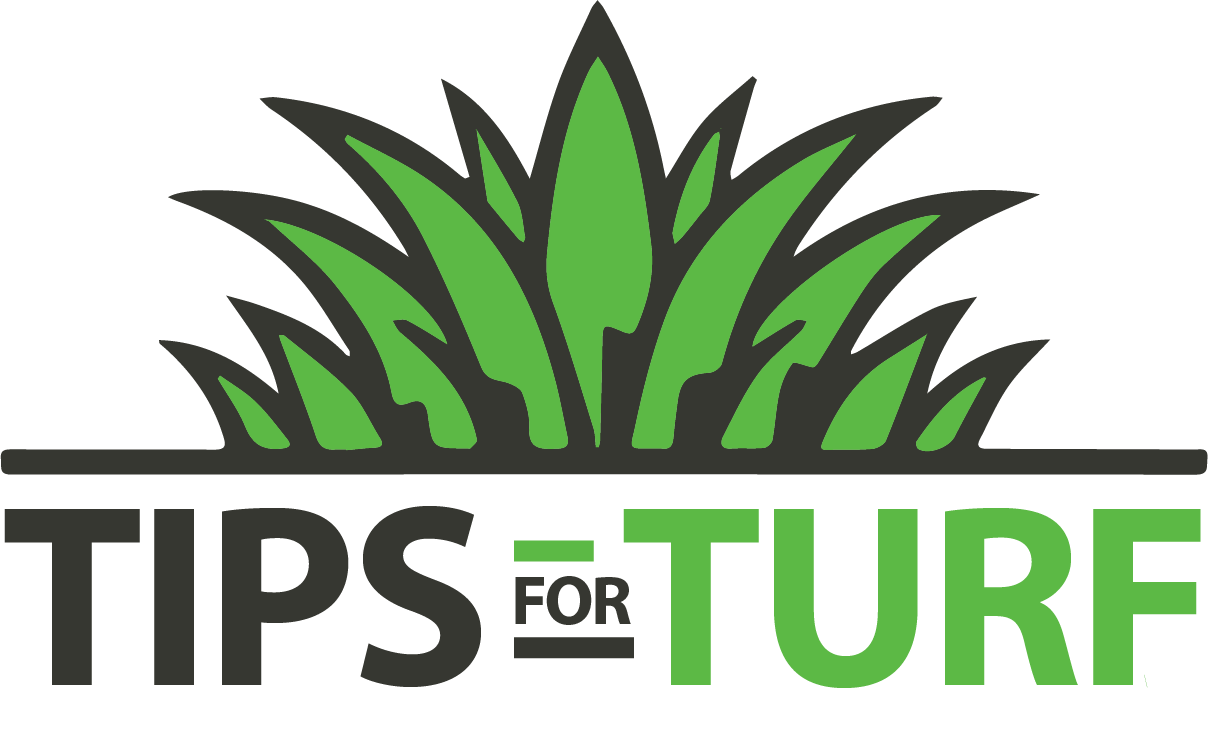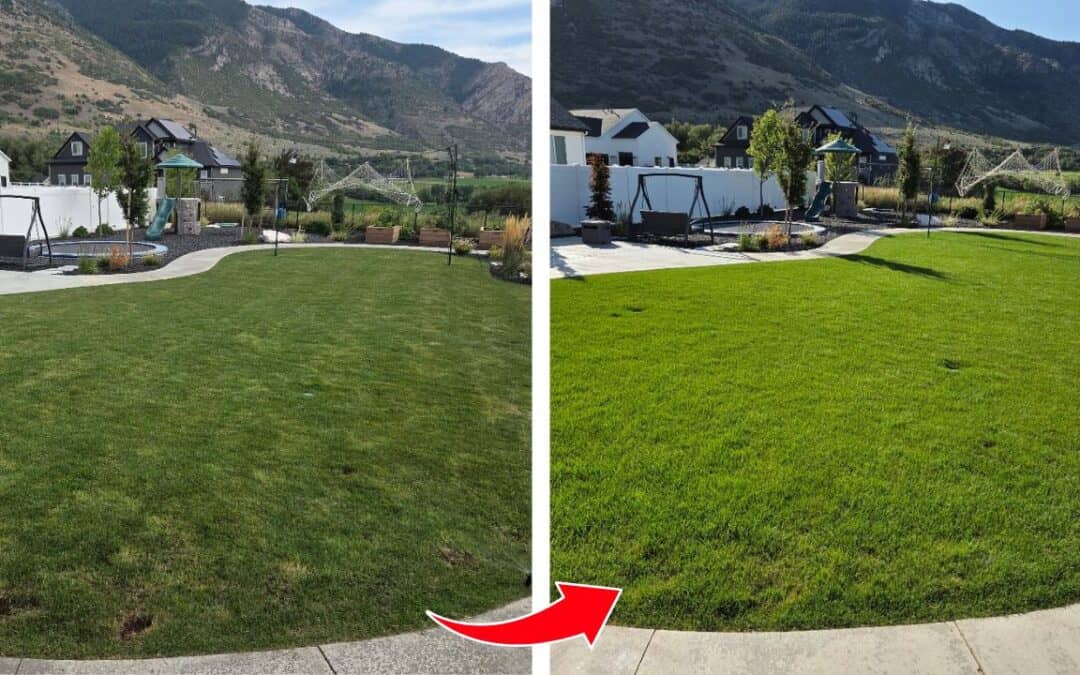As summer winds down, many lawns start to show signs of stress—bare patches, thinning grass, and worn-out areas from kids playing or heat damage. The good news? Fall is the perfect time to bring your lawn back to life with overseeding. With just a few simple steps, you can have a thick, dark green lawn in as little as 10 days.
(If you make a purchase using the links in this post, we may earn a commission.)
Why Overseed in the Fall?
While you can also overseed in the spring, doing this project in the Fall has some major benefits. Here are a few big reasons why fall is the ideal time for overseeding your lawn:
- Peak growing season for cool-season grasses – Temperatures are cooler, which makes conditions perfect for seed germination. There’s also much lower weed pressure in the Fall. With fewer weeds competing, your new grass has a better chance to thrive.
- Repair summer damage – Overseeding helps fill in bare spots and thinned-out patches caused by heat and heavy use. If you’ve got kids playing on the lawn, pets doing damage, or just areas that have been stressed and thinned out by blasting heat, now’s the time to thicken it up!
- Enhance lawn color – Adding new grass cultivars, like perennial ryegrass, can darken and enrich the overall look of your yard. For this project, I used a 50/50 mix of Hattrick and Fireball perennial ryegrass—two of the darkest, fastest-germinating grasses available.
Now that we’ve talked about why you should overseed in the fall, let’s go through a step-by-step guide on exactly how to do a Fall overseed!
Step 1: Scalp the Lawn
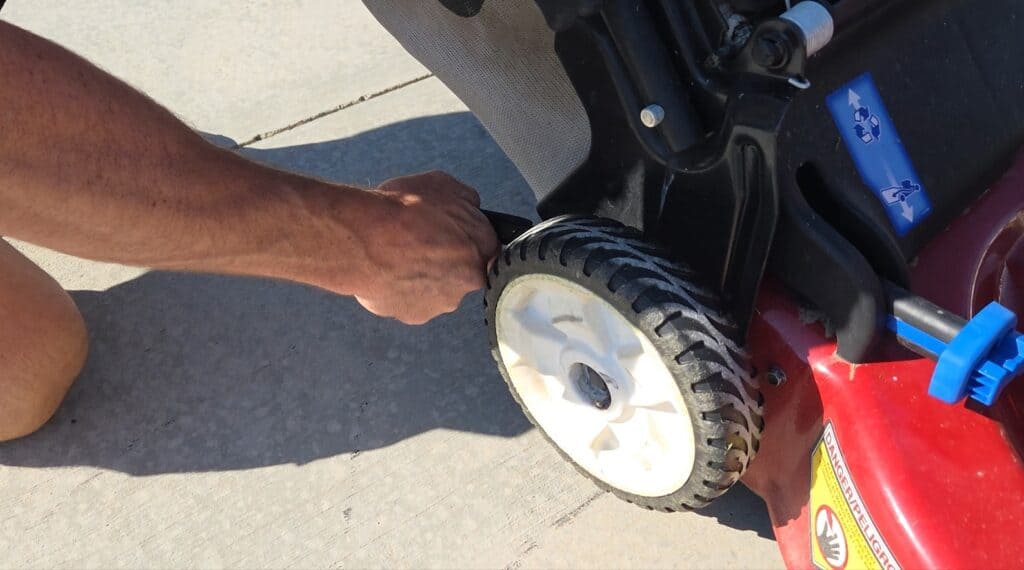
The first step is mowing your lawn low. Ideally go to the lowest setting on your mower deck, which is typically a height of 1 to 1.5 inches. If you can’t go all the way down, then incrementally lower your mower deck and mow in multiple passes (and don’t forget to bag it along the way!).
Scalping removes the top layer of grass and dead material, exposing areas that need repair. Don’t be alarmed if your lawn looks rough after this—it’s normal. It’s going to get a bit beat up, but don’t stress. Within two weeks, the new seed will cover those yellow spots.
The other reason to mow low is to give the new seeds you’re planting better access to sunlight, water and oxygen. If your existing grass is too tall all around your seeds, they won’t get the nutrients they need to germinate properly.
Tools You’ll Need To Scalp The Lawn Before Overseeding
- Lawn Mower – https://amzn.to/46DXRm8
- Contractor-Grade Trash Bags – https://amzn.to/48gPeiC
Step 2: Dethatch and Scarify
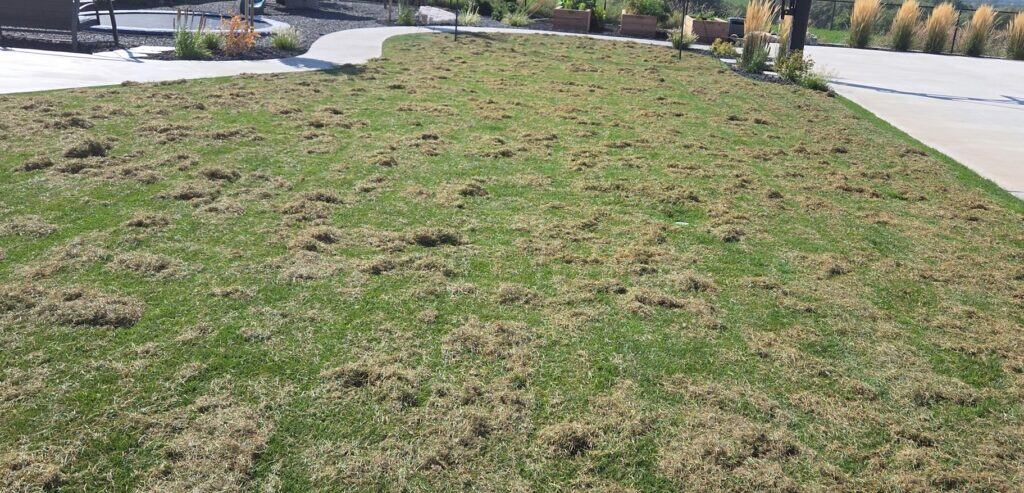
This step is critical when it comes to doing a fall overseeding. Over time, lawns build up a spongy thatch layer of dead grass and debris that blocks new seeds from reaching the soil. Using a dethatcher or scarifier, you’ll remove this layer and scratch up the soil surface to create ideal seed-to-soil contact.
While you can dethatch (or even aerate), I prefer to use the scarifier attachment on a Sun Joe Dethatcher. This attachment consists of blades (instead of skinny tines), and will scar up the soil as well as pull up the thatch. On the one hand, you get all the dead thatch out, and on the other you have created perfect little soil beds for your new seed you’ll be putting down.
When dethatching/scarifying your lawn, go over the lawn twice—once in one direction, then again perpendicular. Rake up and bag the debris each time. You might enlist the help of a friend for this step – it’s the most labor-intensive part of the entire fall overseeding process.
Expect to collect a surprising amount of dead grass material during this step of the overseeding process!
Tools You’ll Need to Dethatch Your Yard During an Overseed
- Sun Joe Electric Lawn Dethatcher & Scarifier – https://amzn.to/45Dfty7
- Gloves – https://amzn.to/4leHEbn
- Leaf rake – https://amzn.to/4npip7s
Step 3: Spread the Seed on the Yard
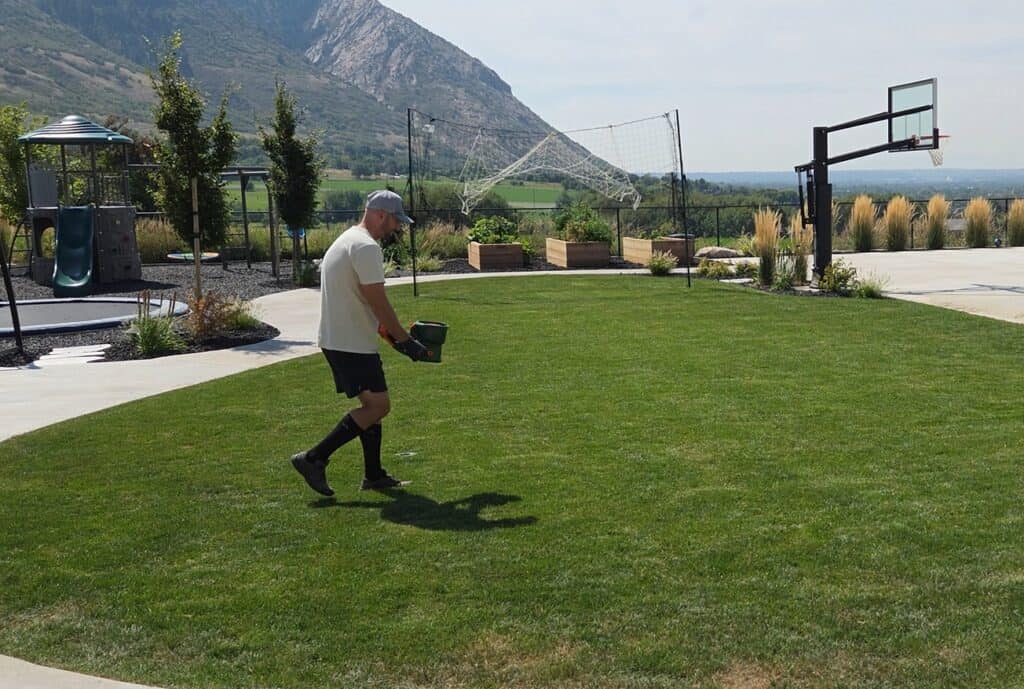
We’ve now come to the step that reflects the Fall Overseeding process directly. But before you get to applying seed to your lawn, you need to make sure you pick the right seed.
What Type of Grass Seed Should I Use for Fall Overseeding?
If your lawn is made up of cool season grasses (mine is primarily Kentucky Bluegrass), then the grass seed I would highly recommend is that of perennial ryegrass. This is for 2 reasons:
- Perennial Ryegrass is some of the darkest green grass seed on Earth. One of the main reasons I’m doing a fall overseed is to help get my lawn EVEN greener and the way you do that is by adding new cultivars of grass to your lawn. By overseeding with perennial ryegrass I get the benefit of dark green grass amidst my Kentucky Bluegrass – slowly turning it darker green over time.
- Perennial Ryegrass germinates in 5-7 days. This is a game-changer for me. I have kids and a wife who loves to entertain out in the yard. I can’t be stopping all yard activity for an entire month while my new Kentucky Bluegrass germinates (yes, that’s correct – Kentucky Bluegrass can take up to 30 days to germinate). But a week? I can do a week.
When it comes to picking which type of perennial Ryegrass to add into the yard through a fall overseed, I picked the absolutely 2 darkest cultivars I could find – a 50/50 blend of Hattrick and Fireball grass seed.
What Ratio of Seed Should I Apply to The Lawn?
For overseeding, use about 5 lbs of seed per 1,000 sq. ft.—roughly half the amount you’d use for starting a brand-new lawn. A hand spreader works well for small lawns and gives you more control along edges. For bare patches, apply seed by hand a bit heavier than the rest of the yard.
Supplies You’ll Need When Applying Seed
- Scotts Whirl Hand-Spreader – https://amzn.to/46DCpON
- Fireball / Hattrick Grass Seed – https://thelawnlife.com/products/fireball-perennial-grass-seed?sca_ref=9570198.tnSsFSCU50O
Step 4: Ensure Seed-to-Soil Contact
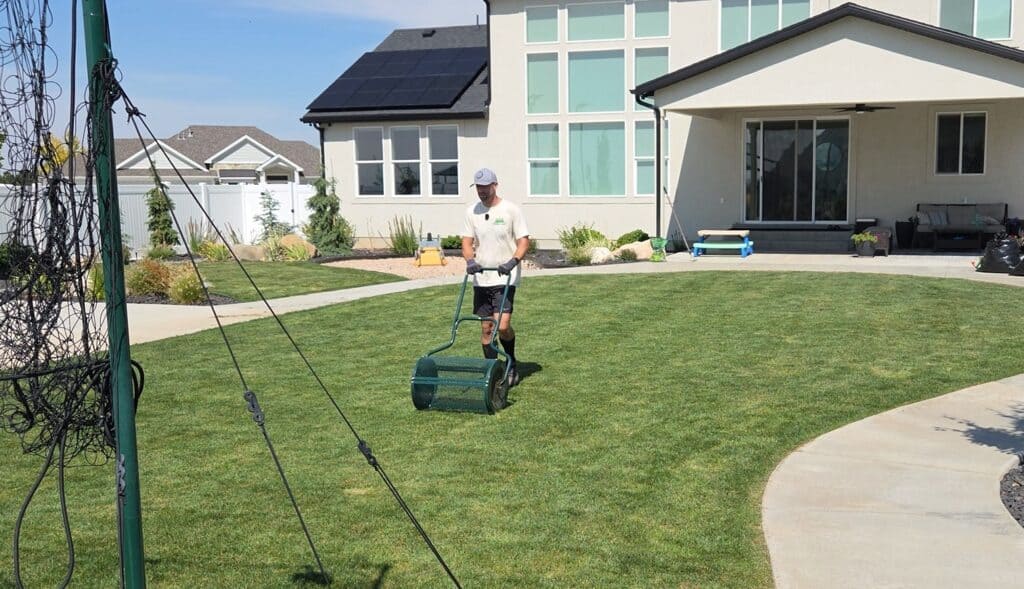
To do an effective Fall overseed, the seed has to make it down to the freshly cut up soil. Seeds sitting on top of the grass won’t grow. You need to press them into the soil and create what’s known as “seed-to-soil contact”. There are a few ways to do this:
- Lightly rake the grass to move seeds down.
- Use a lawn roller or yard barrel.
- Simply stomp down the entire yard with your feet.
For my yard, I used a peat moss spreader to help me both agitate the grass to get the seeds to fall down as well as press the seeds down into the soil. For any bare areas where I applied a heavier amount of perennial ryegrass seed, I stomped down the seed in my feet to ensure it would be nicely secure in the soil.
Supplies You’ll Need For Seed-To-Soil Contact
- Peat Moss Spreader – https://amzn.to/3VcKUJE
Step 5: Topdress Bare Spots
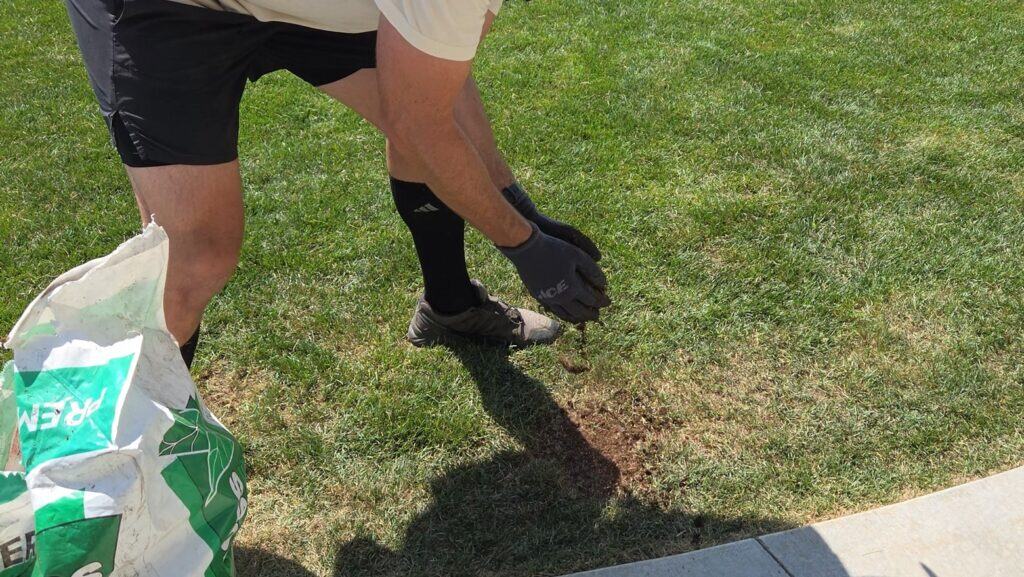
The purpose of adding topdressing (like peat moss) when overseeding, is to help increase seed-to-soil contact, make sure the seeds stay in place, and to protect the seeds from things like hungry birds.
When overseeding, you don’t need to use top-dressing for your entire yard. I’d reserve this for bare/thinning patches that would be the most susceptible to washing away in the sprinkler or would be easy pickings for animals.
For thin or bare patches, spread a light layer of peat moss (about ¼ inch) over your grass seed. This protects the seed from wind, rain, and hungry birds while holding moisture to boost germination.
Supplies You’ll Need When Applying Topdressing to New Grass Seed
- Peat Moss – https://amzn.to/4gwtPUU
Step 6: Water Consistently
Moisture is key to fast germination when overseeding! When doing a fall overseed, water lightly 3 times a day for 5–10 minutes until the seed sprouts.
At What Times of the Day Should You Water When Overseeding?
When overseeding in the fall, you should water once in the morning (around 7-8 AM), once at noon or 1 PM, and lastly around 4-5 PM. If temperatures get into the 90s or 100s, you may want to increase to 4 times a day, and if temperatures go down, you may only need to do this twice a day.
When Can I Stop Watering After Overseeding?
Assuming temperatures are in the 70s-80s (and not abnormally hot), you want to try to keep the ground moist for 7-10 days. After 7-10 days, you can return to a normal watering schedule.
Step 7: Use a Starter Fertilizer
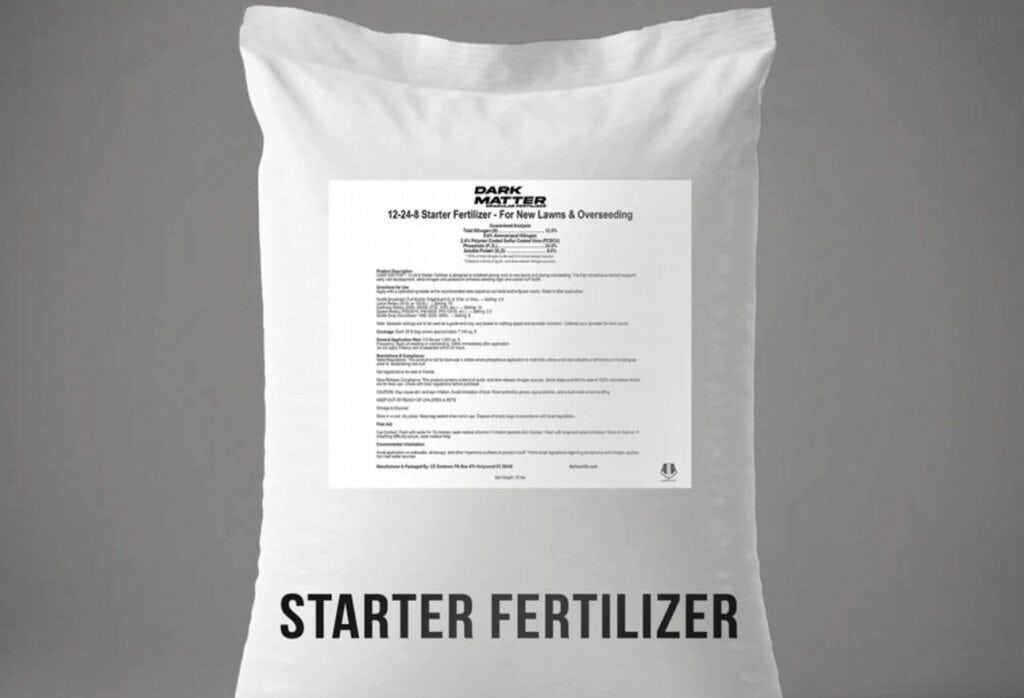
While this is an optional step, it can really help new seed to get established when working with a yard in need of some serious help. If you have a lot of bare patches or thinning areas in your grass, then a starter fertilizer is a must when overseeding.
If your yard is pretty well established, then I’d at least wait about 7-10 days to apply the starter fertilizer, or just resume your normal fertilizing schedule 2 weeks after the overseed.
Supplies You’ll Need for Fertilizing After Overseeding
- Starter Fertilizer – https://thelawnlife.com/products/dark-matter%E2%84%A2-12-24-8-starter-fertilizer?sca_ref=9570198.tnSsFSCU50O&sca_source=YouTube
Results After 10 Days
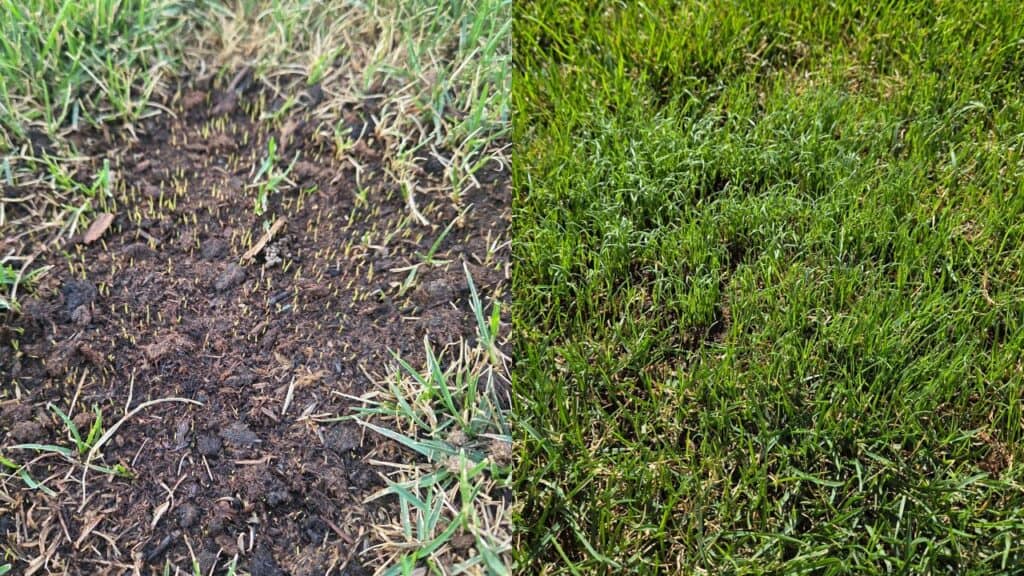
When doing a fall overseed on my lawn, within just 4–7 days, the perennial rye began sprouting. By day 10, my lawn was already thickening up with dark green new growth, filling in bare spots and evening out the entire yard.
By day 14, I’ll be able to mow again, giving the seedlings extra time to establish. The fall overseeding transformation in such a short time has been incredible—dense, dark, and healthy grass heading into the cooler months.
A Fall Overseed Can Transform Your Lawn
If you want a lush, green lawn heading into fall and spring, overseeding is one of the best things you can do. It strengthens your turf, fills in weak spots, pushes out weeds and enhances the color of your yard.
Ready to overseed your lawn this fall? Grab your mower, perennial ryegrass seed, Sun Joe dethatcher, and peat moss, and get started—you’ll be amazed at the results in just 10 days.
